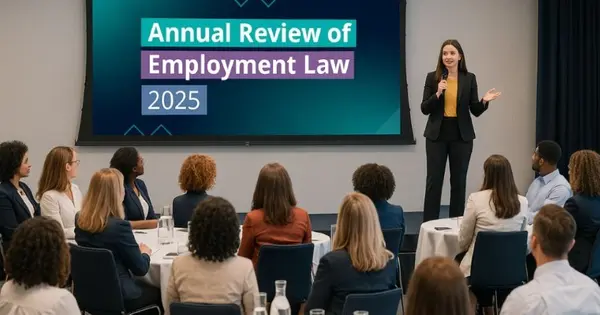Ciara Fulton is partner and Head of Lewis Silkin (NI) LLP.
Ciara is dual qualified and advises on all aspects of employment law in Northern Ireland and the Republic of Ireland. She has significant experience of advising clients on the full range of employment issues including complex discrimination issues, bullying and harassment claims, disciplinary and grievance matters, business reorganisations, senior executive severances, restrictive covenants, employment related litigation and TUPE.
Ciara’s approach is to partner with clients providing practical, commercial advice to resolve HR issues whether contentious or non-contentious. Ciara works with a variety of sectors with particular experience in the construction and infrastructure sector.
Ciara regularly speaks on a range of employment issues at internal and external events and delivers bespoke training to clients on the differences between NI and ROI employment law. Ciara is a member of the Employment Lawyers Group and the NI Representative for the Employment Lawyers Association. Ciara is also a legally qualified member of the Appeals Tribunals NI.
We are carrying out a redundancy exercise and one of our long serving employees has raised the possibility of bumping. How do I handle it?
Ciara Fulton, writes:
The question of bumping is closely allied to question of whether or not the company has identified the correct selection pool. This question becomes complicated when employees are multi-skilled and or, in practice, do different types of work or can be required to do different types of work under their contracts of employment. In such cases employees can object to being made redundant if they can point to other employees within the organisation with whom their skills are interchangeable.
The case of Murray v Foyle Meats Ltd (1999 IRLR 562) confirmed the potential lawfulness of redundancies caused by bumping. In that case the then House of Lords considered the meaning of redundancy and held that redundancy is a matter of fact determined by applying two questions to the statutory definition:
- Are less workers required to perform work of a particular kind? and
- Was the dismissal attributable wholly or mainly to that reason. So long as any redundancy caused by bumping satisfies this test then it is a potentially fair dismissal.
In Lionel Leventhal Limited v North UK EAT/0265/04 a senior editor was selected for redundancy on the ground that he was the Company’s most expensive employee. His dismissal was found to be unfair among other reasons because his employer should have considered making a more junior employee redundant and offering their job to the senior editor. The employer should not have assumed that the editor would reject the lower salary. On appeal, the EAT said that whether it is unfair to dismiss for redundancy without considering bumping is a matter of fact for the Tribunal to determine by reference to the particular circumstances.
The Leventhal case was followed in Fulcrum Pharma (Europe) Limited v Bonassera and another UK EAT/0198/10 in finding that an employer had unfairly dismissed an employee when it had decided a redundancy pool should only contain the employee whose position it had decided to remove from its structure and not a more junior employee (the HR Manager and not the HR Administrator). The employer should have ascertained during the consultation process whether Ms Bonnassera would wish to consider the more junior role at the reduced salary.
In Thomas v Betts Manufacturing Limited (1980) IRLR 2255, the Tribunal held that it was unfair to dismiss a fitter while retaining another employee to be a packer without considering whether the fitter could have been transferred to do the packing work. Put another way, failing to put the packer in a pool along with the fitter rendered the dismissal unfair.
That said, the case law does not mean that an employer must always consider bumping when drawing up the pool. It may be perfectly reasonable for an employer to confine the pool to those doing the same or similar work as was the case in Green v A&L Frazer where the EAT held that it was within the band of reasonable responses for an employer to dismiss a driver who could do the work of a mechanic, while not putting in the pool a mechanic who occasionally did some driving. Also in Byrne v Arvin Meritor LVS (UK) Ltd (EAT 239/02) the EAT rejected a claim that the employer should have considered dismissing a long serving, well qualified employee in order to retain a more senior employee.
The following points emerge from the case law:
- Where the employee has previously done other work an employer should consider bumping as his skills may be interchangeable with other employees.
- Where the worker is “low skilled”, the skills are more likely to be regarded as interchangeable.
- Where the employee can point to another employee with interchangeable skills who also has less service than them, this may strengthen the argument that bumping should have been considered.
In order to ascertain whether bumping would be appropriate in a particular case, the starting point should be to consider what the employee actually does having regard to their day to day activities and the terms of the employee’s contract. The Company should also consider whether or not the employee’s skills are interchangeable to skills of other employees. If the employee has long service and has experience of doing different types of work within the organisation, it might not be reasonable for the Company to fail to consider bumping if he could do the work of another person. However, if the employee would not be skilled/experienced to carry out the duties of other employees then the employer may be able to justify not considering bumping on this basis.
Continue reading
We help hundreds of people like you understand how the latest changes in employment law impact your business.
Please log in to view the full article.
What you'll get:
- Help understand the ramifications of each important case from NI, GB and Europe
- Ensure your organisation's policies and procedures are fully compliant with NI law
- 24/7 access to all the content in the Legal Island Vault for research case law and HR issues
- Receive free preliminary advice on workplace issues from the employment team
Already a subscriber? Log in now or start a free trial



